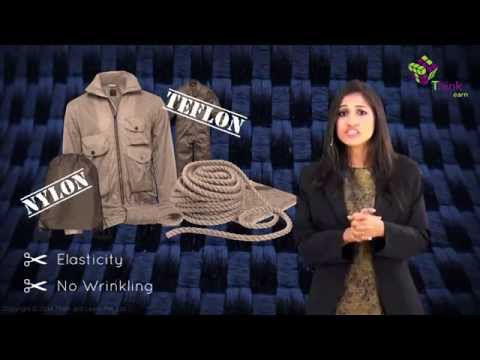What is Rayon?
Rayon is a generic term that includes several cellulose-derived fibres produced by different methods.
Rayon, the first of the manufactured fibres produced in large volume, is based on the natural polymer cellulose, a repeat unit of which is shown below.
Although in the early days the main source of this raw material was cotton linters, a combination of improved technologies for obtaining alpha-cellulose nitrate during world war II resulted in a shift in raw material to wood pulp.
Only certain trees constitute the most economical supply of dissolving pulp as the final product is called rayon. The process economics depends upon the cost of logs delivered at the pulping mill and the relative yield of alpha-cellulose after the unusable lignin and the other components of the wood are discarded. The dissolving pulp is received by the rayon manufacturer in sheer or roll form.
Table of Contents
Recommended Videos
Rayon Fabric – History of Rayon Fabric

Rayon lacks the highly ordered fibril character of cotton and flax. It is readily accessible and the effects of bleaching are more severe. In its preparation from xanthate-derivatized wood pulp, rayon is regenerated in an acid bath to cellulose before extrusion from a viscous solution as filament fibres.
This process reduces the chain length of cellulose by one-third of the expected value for cotton and flax. Hence, there are many shorter chain lengths and thus a greater number of reducing ends. Rayon is a commonly cut stapled whenever bleaching may be required.
List of Uses of Rayon
Among the man-made fibres that are presently used in clothing and which are flame resistant are mod-acrylic fibres. Fabric conditioners can be used with any rayon fabric for the intent of the product involved at user’s discrimination. Some uses of rayon are listed below.
1. Industrial Uses:
In most industrial uses, the durability of fabric under moderate to severe treatment is a matter of prime importance in its selection. Rayon, being relatively more expensive and much less durable than cotton in most such cases, has found little application in the field of industrial uses. With regard to cotton, rayon is pertinent to mention here that industrial uses account for approximately two-fifths of the cotton consumed in the United States each year.
2. Used in Garments:
The fabrics used for the girl’s vests and boys’ two-button union suits for these tests were all made on spring needle circular knitting machines. For each particular size of garments, the cotton and rayon fabrics were both knitted on the same machine. The cotton fabric was knitted from combed yarn.
The viscose rayon yarn, which was obtained from one of the larger domestic producers, was reported to have been made from a mixture of approximately 50 percent each wood pulp and of purified cotton linters.
3. General Observations:
It is simply a statement of those conclusions which follow naturally from a consideration of the present relative properties and prices of rayon and other textile fibres.
What it is desired to bring out is the fact that the field for expansion of rayon is not unlimited, that it is textile fibre with definite and distinct properties which in some uses offer advantages over cotton silk, and wool and in others are definitely restrictive to its usefulness.
Frequently Asked Questions on
What fabric is rayon?
Rayon is a natural fibre created from cellulose derived from pulp or cotton extracted from wood. Working with it is a low-cost and versatile material, and it lends itself to different uses. Several grades of rayon can imitate the appearance and texture of other natural fibres such as cotton, linen, and silk.
Which is better: rayon or cotton?
Rayon is more absorbent than cotton and linen which makes it the most absorbent fabric based on plants. In comparison to synthetic fabrics such as polyester and acrylic, rayon and cotton are breathable and thus more lightweight and comfortable to wear on hot days. As compared to cotton which remains solid, it also loses strength when wet.
What is rayon best for?
Rayon is a particularly good fabric for sportswear and summer dresses since it is so easy and casual to wear. Although a great hot weather fabric, rayon can shrink in warm water when washed. You can wash your hand in cold water but a dry clean ray to prevent shrinkage or harm is recommended.
What are the properties of rayon?
Rayon Fibre is cool, smooth to the skin and has mild resistance to dryness and abrasion. One of the strengths of the rayon fibre is its flexibility and ability to mix easily with other fibres to minimise costs at times, at other times for lustre, softness, or absorbency and resulting comfort.
What is the advantage of rayon?
Rayon is a versatile cotton fabric which shares many advantages. It is smooth, easy, absorbent and breathable, easily takes dyes and comes from sustainable raw materials.

Comments